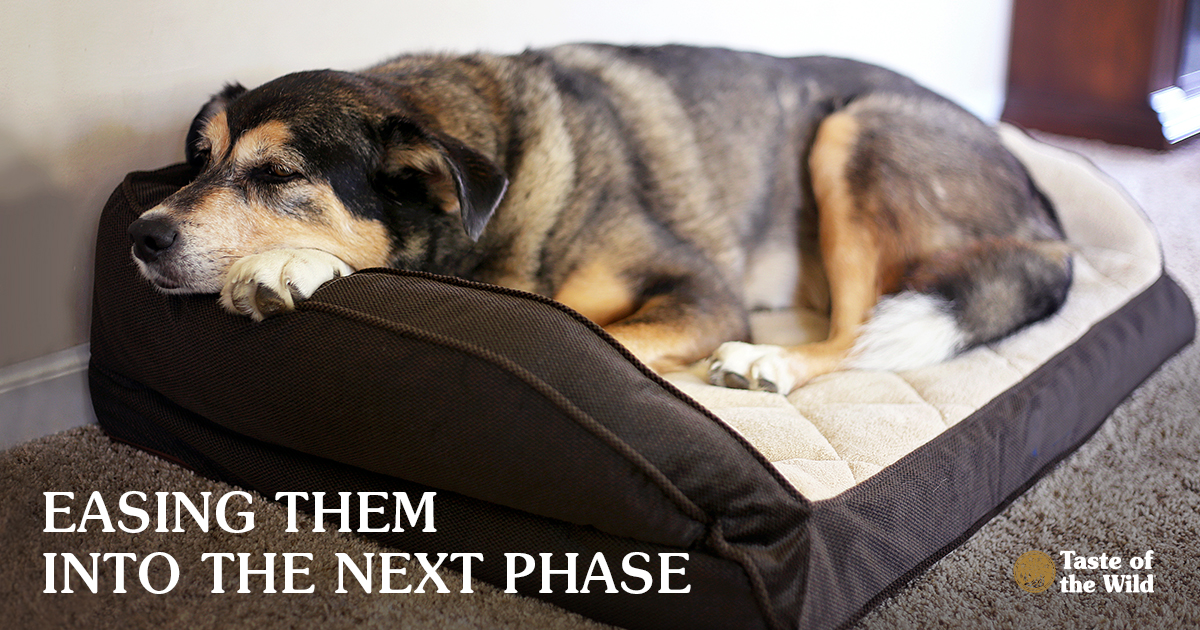
Pets, like all of us, eventually reach a time when the body deteriorates and there’s no going back. For some pets, a terminal diagnosis such as cancer or kidney disease happens at the end of a long and active life. Other pets, unfairly, receive this kind of diagnosis when they’re still relatively young.
In the past, compassionate euthanasia was often suggested as the best option to give the pet “an easy way out” and avoid inevitable suffering. But a terminal diagnosis doesn’t always mean your pet has reached the end of the road.
Today, pet hospice and palliative care is a growing branch of veterinary medicine that’s dedicated to providing dogs and cats with a pain-free, comfortable existence and the best quality of life possible for the time that’s left.
What are hospice and palliative care?
Hospice care is a medical approach that recognizes that the goal is no longer to cure the disease, but rather to manage it through care that palliates, or makes something less painful and more comfortable. This includes controlling pain and other symptoms to provide the pet with the greatest comfort and quality of life.
Hospice care may be instituted when there are no more treatments available or when owners choose not to pursue additional treatment, such as chemotherapy for pets with certain types of cancer. For dogs and cats, hospice care generally takes place in their own homes and can last for weeks, months and even years.
Think hospice and palliative care might be right for your pet?
Finding the right veterinary team
The best hospice care will include a veterinarian who can assess your pet’s health on a regular basis. It’s also helpful if a veterinary technician can visit your home and help with administering subcutaneous fluids, bandage changes, warm compresses and other procedures — or teach you how to perform these tasks if you are willing.
Together, you should evaluate your pet’s comfort, appetite and quality of life on a regular basis and make treatment adjustments as needed. Because hospice care usually requires more frequent consultations with the veterinary staff, make sure you know the costs — and check your pet health insurance because some policies cover the expenses for hospice care.
Pain management is key
Many pets — especially cats — are experts at hiding pain. That’s why it’s crucial to have a veterinary professional involved who can objectively evaluate your pet for pain on a regular basis and tweak medications as needed. While in-clinic exams are always the best way to assess your pet, getting ailing cats and dogs into and out of the car can be problematic. In these cases, you may also be able to video chat with your veterinarian or send them video clips of your pet’s behavior.
Modifying the home environment
There are several slight changes you can make around the house to help improve the mobility and safety of your pet. For those with arthritis, you can provide extra steps up to the bed or couch, non-slip rugs and raised water and food dishes. If your pet has trouble walking, there are pet wheelchairs, slings and vests with carrying handles. Appropriately placed baby gates can help prevent your pet from tumbling down the stairs.
Proper nutrition and hygiene
Food is essential to keep your pet going. Depending on your pet’s condition, your veterinarian may suggest a special diet. If your pet has very little appetite, hand feeding may help as can appetite stimulants, or placement of a feeding tube.
If your pet has urinary or fecal accidents where it lies down, it’s important to thoroughly clean and dry your pet to prevent skin damage. Your pet may also need help grooming and removing matts.
Will you know when it’s time?
One of the more difficult aspects of hospice care is assessing your pet’s quality of life. One way to help measure this is with Dr. Alice Villalobos’ Quality of Life Scale. Together, you and your veterinary team can determine when the time is right to say goodbye for you, your pet and your family.
The information in this blog has been developed with our veterinarian and is designed to help educate pet parents. If you have questions or concerns about your pet's health or nutrition, please talk with your veterinarian.
